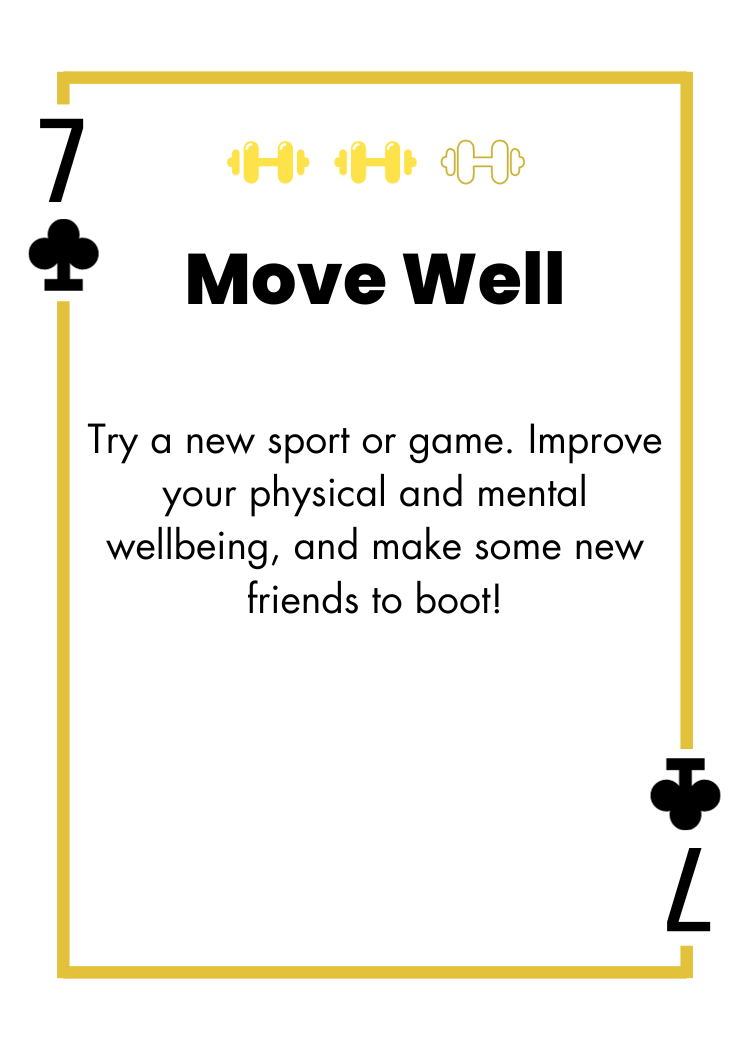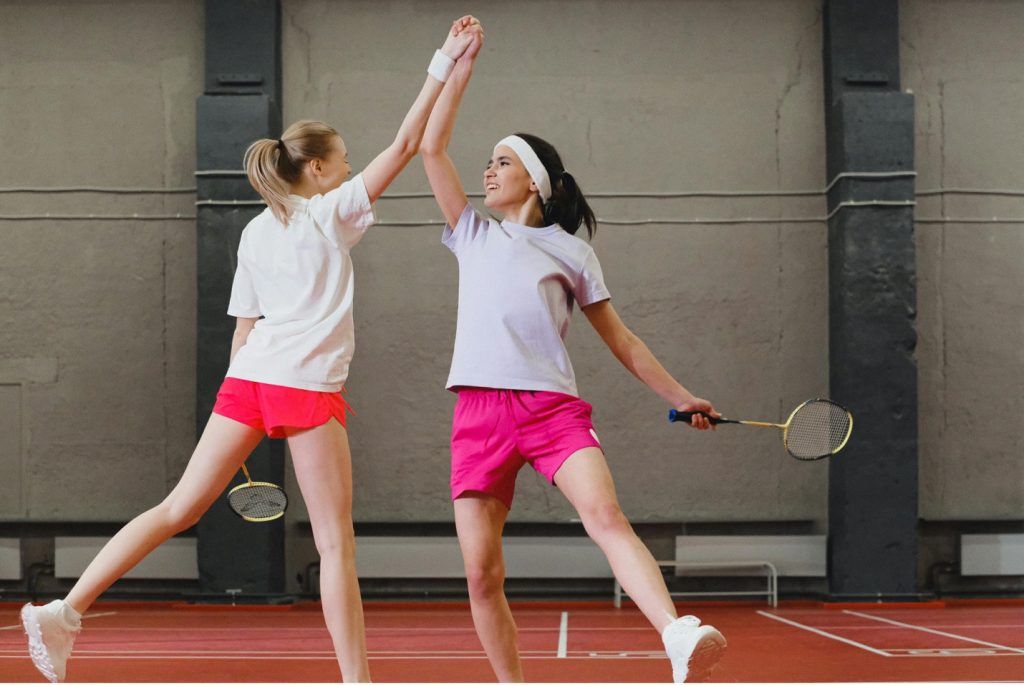7 of Clubs - New Sport

Trying something new and meeting new people can feel a bit daunting at times but it’s a great way to stimulate mind and body.
Why not try out a new sport as a great way to meet new people and have some fun?
Learning new skills and getting the body moving provides an amazing opportunity to grow, learn, and be vulnerable with others – an empowering experience. Give it a go this week, you won’t regret it!
If you think individual, one-to-one coaching would benefit you, we know just the team to connect you with. Sign up for wellness coaching with our experts today.
You can also gift one of our wellness programmes to friends or family members as a birthday or Christmas present – they won’t be able to thank you enough.

There are so many ways to introduce oneself to a new sport. Test out watching different sports on television or on the internet. Ask friends and family which sports and sport clubs they are involved with on a regular basis and check out their suggestions. Also, research local recreation sports leagues to find the right new sports to test out. Be patient and try out any sport which is interesting to you.
Here is a website to help find a new sport to try:
https://sportnz.org.nz/find-a-sport-or-recreation-activity/
The reasons to try out new sports are numerous. A main reason is sport can foster increased socialisation and help with meeting new people. Social interaction is an important dimension to address in a person’s wellbeing. Secondly, being involved in sport promotes better overall health and fitness for an individual. Lastly, sports also promote better brain functioning through the effects of exercise and from the challenge of learning new motor skills. Personal growth lies at the heart of the decision to try a new sport. The 1% Club at Imago is dedicated to helping guide you along your personal growth journey.
Stenner et al, 2020, conducted a systematic literature review to determine the reason why older adults participate in sport. The authors included studies reporting older adults participate in sport to improve their health and well-being. However, the authors discovered sport participation also provided opportunities for having social interactions, feeling a sense of belonging to a community, creating relationships, experiencing competition, achieving goals, and as a positive contribution to the overall attitude of healthy aging.
Neuroplasticity is a theory which says the brain changes its structure to accommodate developmental changes and learning. Research shows by learning or practicing a new skill, a person’s brain expands in volume in the areas relevant to the skills you’re performing or the information you are learning. The brain expansion is theorised to lead to an increase in grey matter tissue in the central nervous system and therefore increases cells like neurons which are responsible for thinking, reasoning, movement and so much more. Additionally, studies have shown acquiring and performing new motor skills can be as cognitively challenging as other intellect-based activities (e.g. crossword puzzles). So, a new sport can be just as effective at helping your brain grow in the same way as conventional brain challenges. In addition, trying a new athletic activity stimulates the motor cortex in the frontal lobe of the brain and helps to increase myelination. Myelin is a protein which surrounds parts of the neuron and acts sort of like the insulation cover on an electrical wire. This allows the neurons to communicate more effectively since the electrical impulses inside the body travel can travel more easily. (Kamakawa 2021).
https://blog.ab.bluecross.ca/wellness/finding-my-balance-the-benefits-of-trying-a-new-sport/
Small changes CAN make a big difference – that’s what The 1% Club is all about.
Kamikawa, M. (2021, July 27). The mental and physical benefits of trying new sports. Competitive Edge. https://compedgept.com/blog/benefits-new-sports/
Stenner, B. J., Buckley, J. D., & Mosewich, A. D. (2020). Reasons why older adults play sport: A systematic review. Journal of sport and health science, 9(6), 530-541.


 See Other Cards!
See Other Cards!